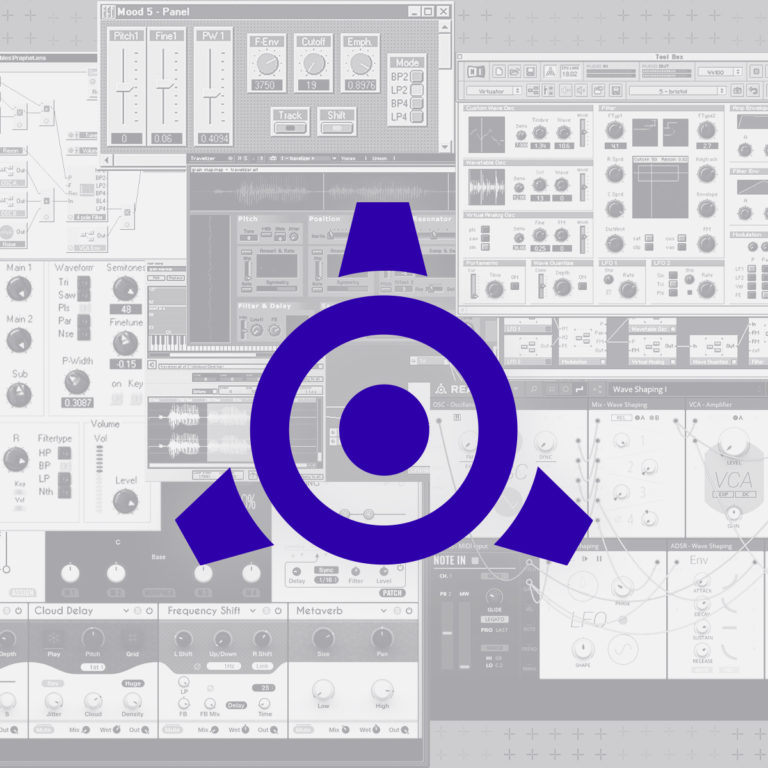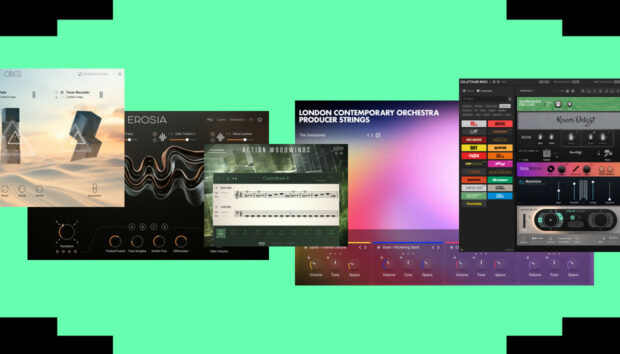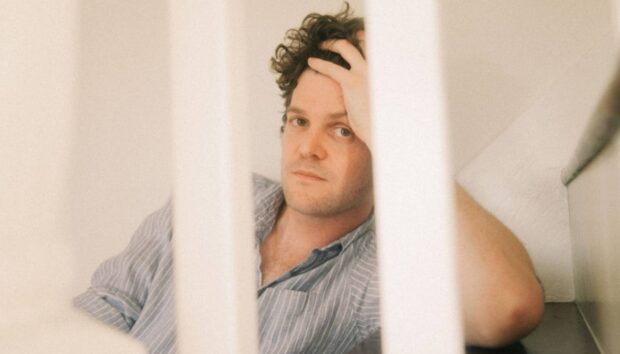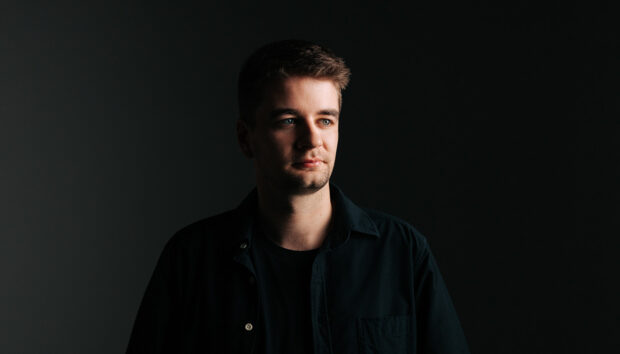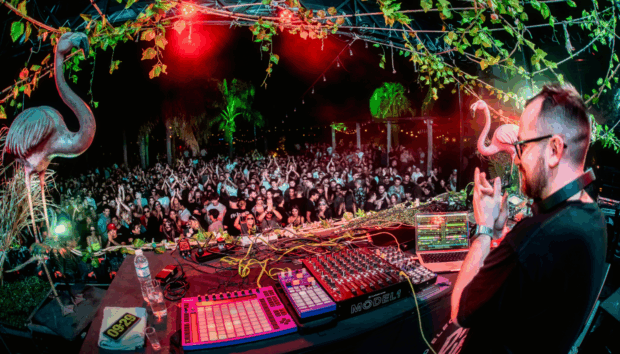From Radiohead and the Flaming Lips to Merzbow and Haxan Cloak, boundary-pushing creators of all genres have been building tools, tracks, and even careers on REAKTOR for more than two decades. Pinning down exactly what REAKTOR is, however, is not so straightforward. Depending on who you ask, it’s a modular synthesizer, a programming environment, an entire studio, or just a convenient wrapper for a few favored synths and effects.
To us at Native Instruments, it’s all of the above and more. REAKTOR is the direct descendent of our very first product. It’s also the platform on which synths like RAZOR and MONARK are built and used, and the place where instruments from MASSIVE to TRAKTOR are prototyped. It’s also the beating heart of a thriving community who together have built thousands of unique instruments, effects, and tools, many of them shared for free.
To mark the 25th anniversary of Native Instruments and, in a sense, REAKTOR, we spoke to some of those who have had a hand in its creation, evolution, and exploitation over the years.
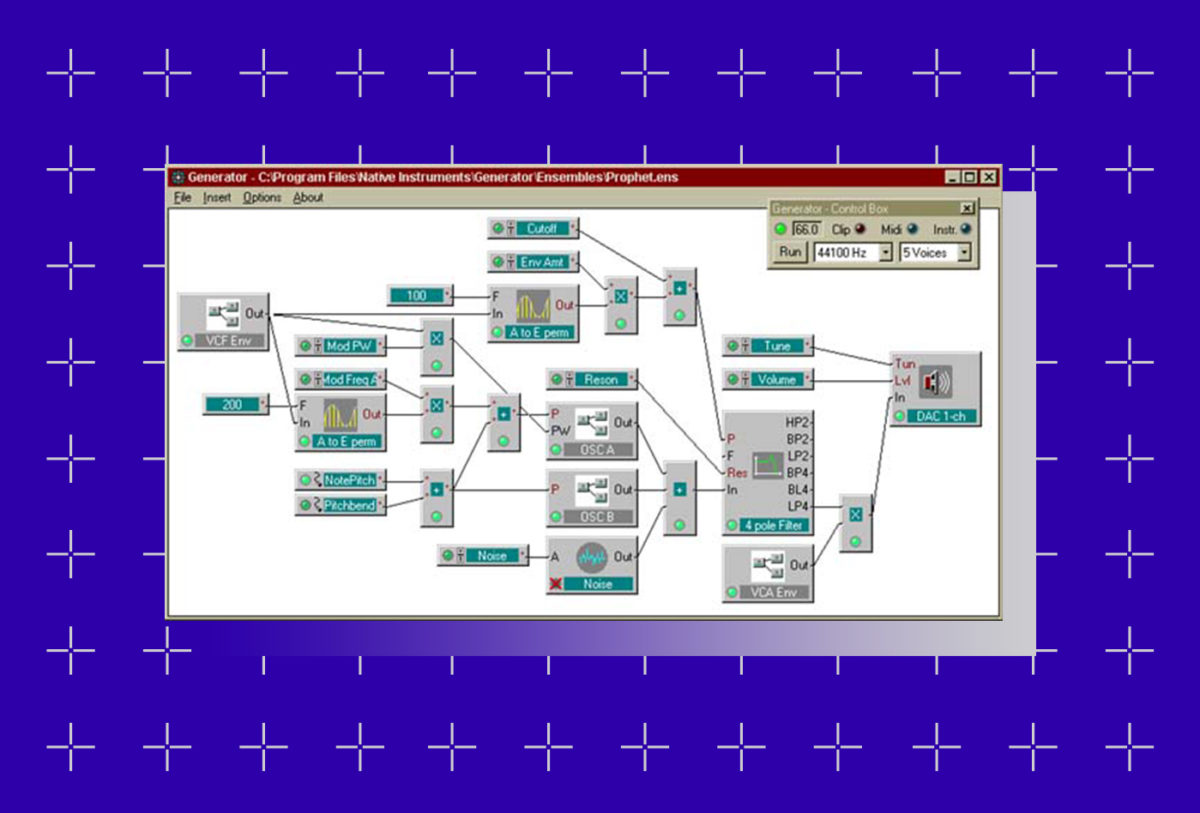
FIRST GENERATION
The story of REAKTOR – and of Native Instruments – begins in 1993 with Stephan Schmitt, who had just been laid off from his job at a digital mixing console manufacturer, along with his friend, self-taught programmer Volker Hinz.
“[At that company], we had a team of software engineers developing the user interface and the software behind it,” Schmitt explains. “I was managing the development and I had to discuss a lot with these software people. I thought, ‘I want to do software in the future myself,’ but I didn’t have the experience or education. I needed a partner to join in and this was Volker.”
The pair originally set their sights on creating mixing consoles of their own, but with a background as a keyboard player, Stephan’s real interest was in creating sounds, rather than capturing them. “It’s nice to deal with acoustic instruments, and I had a big respect for that world, but it’s really fascinating to create the sound from the very first cycle – when the oscillator is creating a waveform.”
I was fascinated by the idea that everybody had a computer around. You could already use it for recording or sequencing but why not use it as an instrument?”
While Stephan admired certain digital synthesizers of the day (the Yamaha DX7 was a particular favorite), he was frustrated with the industry as a whole: both the lack of interesting ideas from established manufacturers and the prohibitively high development costs that prevented new companies from developing alternatives. Nonetheless, things were about to change.
“In the mid-’90s, it became obvious that the CPU of a normal computer, like a PC or a Mac, was becoming fast enough to create audio in real time,” he remembers. “For me, this was the next big thing. I was fascinated by the idea that everybody had a computer around. You could already use it for recording or sequencing but why not use it as an instrument?”
Stephan and Volker set to work on mapping out their vision for GENERATOR, a software synthesizer that would become REAKTOR’s predecessor. As an engineer who wanted minute control of every aspect of an instrument’s sound, Stephan opted for a “radically modular” philosophy that remains at the core of the platform to this day. “I decided to give users full access to every detail of the signal processing and every detail of the user interface,” he says. “So GENERATOR was not only an instrument – it was more of a construction tool that helped you build an instrument.”
Stephan and Volker built a working version of GENERATOR in time for 1996’s Musikmesse trade show in Frankfurt and people took notice. It was the world’s first modular, polyphonic, real-time soft-synth, after all. “I invited the press to come to the booth,” recalls Stephan. “And to my surprise they really came and they really were interested, so I thought ‘Okay, this might be the next big thing.”
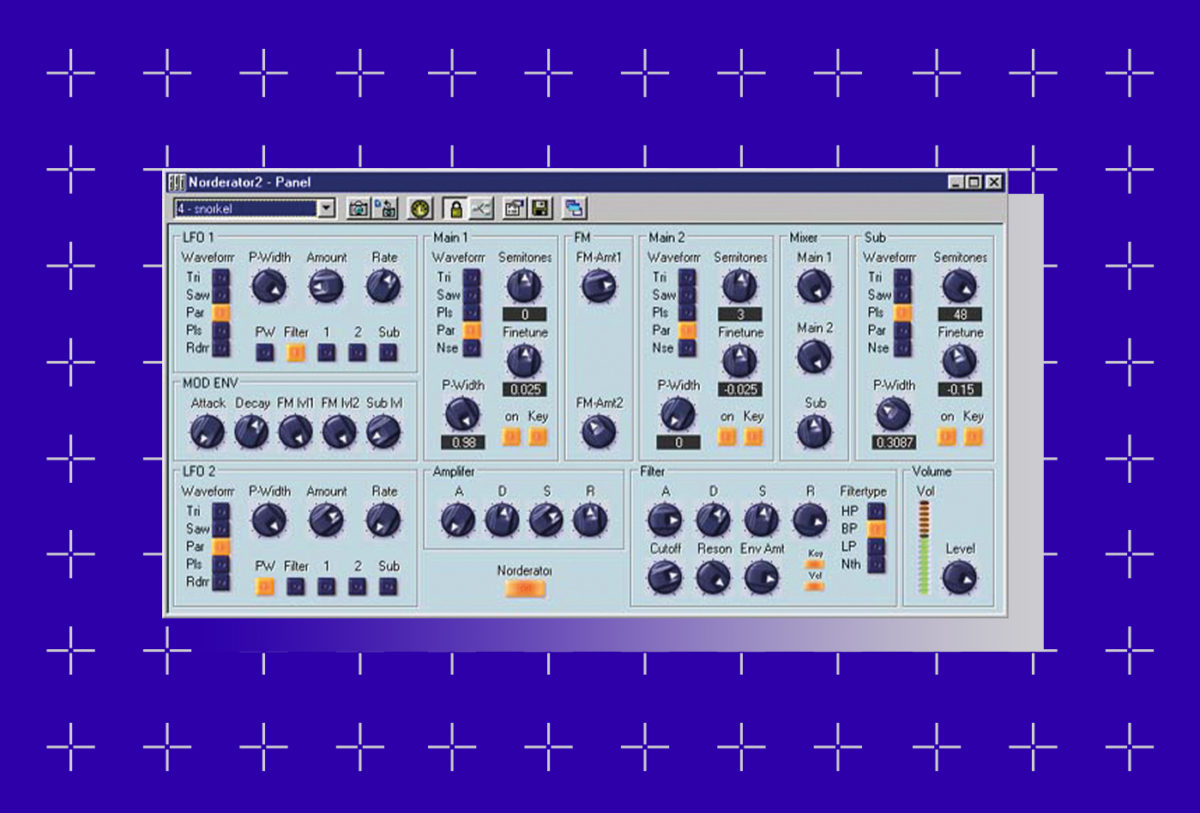
ATTRACTOR BEAM
Along with press attention, the pair also attracted a handful of like-minded developers, business people, and musicians to join the fledgling Native Instruments, including hardware emulation expert Michael Kurz, product designer and future CFO Lorenz Heine, and Bernd Roggendorf – later a cofounder of Ableton. (It was the latter who introduced future-CEO Daniel Haver to the company at 1997’s Musikmesse.)
Around this time, 1,000 miles away in Moscow, another NI employee-to-be had also taken note of GENERATOR’s potential – though he was somewhat less impressed. “Synthesizers were rare and or expensive back then, especially for someone my age,” recounts Vadim Zavalishin, now NI’s Reaktor Application Architect. “Software seemed like a big opportunity for me, but there wasn’t much around in the second half of the ’90s. Generator drew my attention because it was very flexible, but looking at its performance, I saw that it could have been done in a much more efficient way. I expected that Native was going to improve it – maybe this was just the first version and they did it quickly? – but a year passed and nothing happened.”
Vadim took matters into his own hands and created Sync Modular, a platform that looked and sounded like GENERATOR but ran more efficiently and was even more flexible, thanks to a built-in compiler. Rather than sending him a cease and desist, Stephan decided to pay Vadim a visit in Russia and invited him to come work for NI in Berlin, where he used his experience to develop REAKTOR’s super-efficient Core programming layer, introduced with REAKTOR 5. (You can watch Vadim himself giving an excellent introduction to working with Core here.)
Closer to Berlin, another key NI figure was attracted by GENERATOR. The company’s future Chief Technology Officer Mate Galić was a DJ and television host in Cologne, Germany when he spotted a job ad on NI’s website while downloading an update for a GENERATOR’s beta. “I had been up for like 30 hours without sleep working on the computer,” Mate recalls. “I was very obsessed with sound synthesis at that time. In my delirious state, I saw a sign on the website which said ‘We are looking for you.” As I read through the job profile, I thought, “I feel like they’re really looking for me!’ A few weeks later I was in Berlin, and I didn’t leave NI for 21 years.”
“You could call Generator an instrument,” Galić continues. “I call it more of a platform. You, ‘the user,’ are able to design your own sounds by patching things together – basically modules, very similar to what a lot of people are doing today with all of the Eurorack modulars. It was only possible to this extent for the first time with software like Generator, which eventually became Reaktor.”
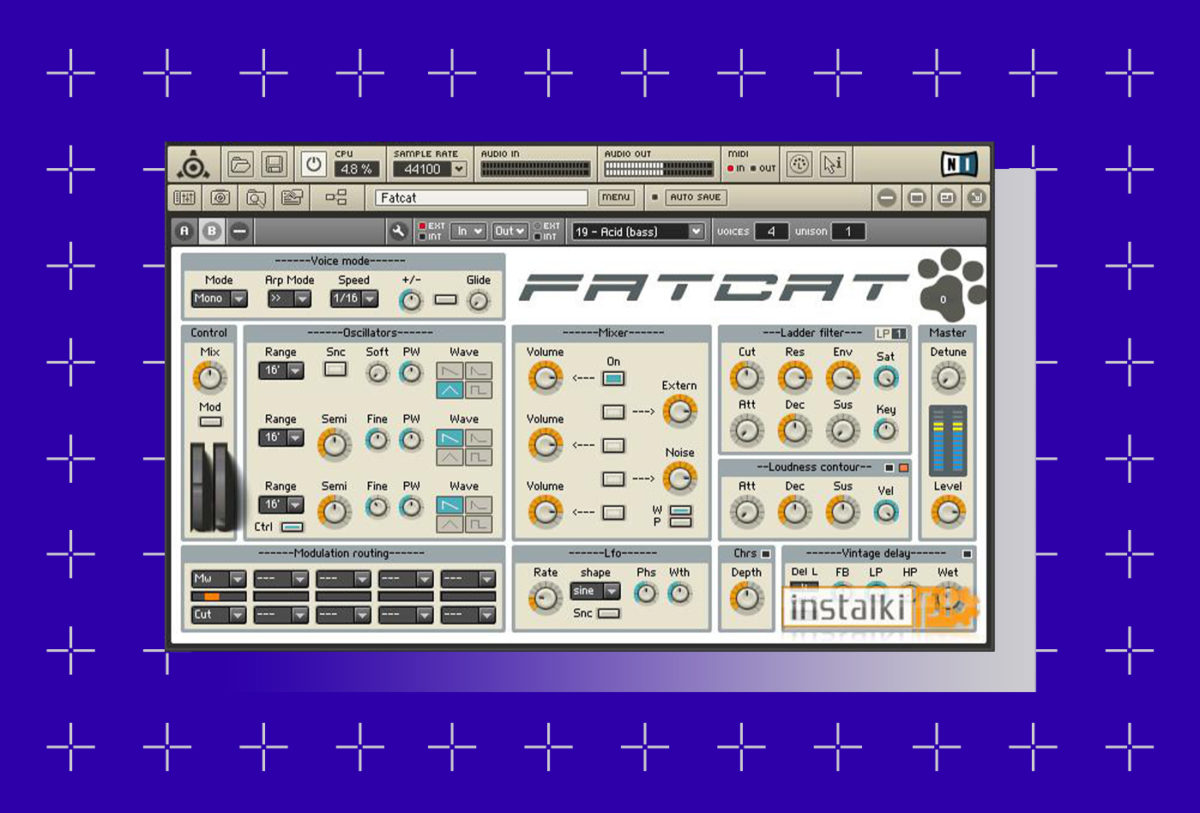
REAKTOR GOES NUCLEAR
Why the name change? The initial GENERATOR was purely a synthesis platform. Then Gerhard Behles, who worked at NI before he co-founded Ableton, brought up the idea of adding sampling modules, particularly of the granular variety. This became a separate product called TRANSFORMATOR. “We didn’t push Tranformator very much, and soon came to the conclusion that it should be joined with Generator to become Reaktor,” says Stephan. “ Reaktor was the full package: it had the synthesis and also the sampling onboard. I think the name Reaktor was partially about chaos.”
“It’s basically the same Reaktor that you still know today and that you can find in Komplete,” adds Mate. “It’s the oldest product that there is in the Native Instruments universe – you could say the company is built on Generator/Reaktor.”
There are relatively few products in the Native Instruments line-up that were not prototyped in REAKTOR, explains Stephan. “The development department, mainly Michael Kurz in the beginning, used Reaktor to create products like Pro-5, Pro-53, the B3 organ, FM7 and later FM8. Reaktor is an environment where you can start connecting parts instead of writing lines of code. Then you can modify without waiting for a compiler to run and try the result. When you draw a wire, you hear the result. It’s very fast.”
While today REAKTOR is one of the most thrilling products for sound designers, Stephan recalls that it was initially a bit of a tough sell. “People didn’t know what to expect from Generator – what they wanted to know was ‘Can this thing sound like a mini-Moog or a 303?’ People were getting really interested in synthesizers but they wanted a reference; we had to convince customers about the sound quality and the latency. It was not my original intention to emulate anything but we had to wait and prove ourselves.”
While REAKTOR itself remains true to Stephan and Volker’s original vision much has been added over the years. Following the jump to REAKTOR 2.0 in 1999, support for Mac was added for the first time, putting the platform within reach of many more creators. In 2001, REAKTOR 3.0 brought a new look, a new and improved audio engine, and several new modules for synthesis and sampling. 4.0 added new tools for customizing ensembles, the A and B views that still feature today, and a surprise return to a low-tech method of copy-protection that involved drilling carefully placed holes in the CD.
You’re not intimidated by writing text code, so you can quite quickly get something going.
In 2005, REAKTOR 5.0 ushered in a new era of creating and customizing ensembles. Users could create new modules using Core, with a handy library of cells included to get them started. Martijn Zwartjes was an early adopter, and contributed to the macro, effect and instrument libraries with his Core-based creations like Steampipe, Spacedrone, SpaceMaster, and various TRAKTOR effects. Core was later adopted by Erik ‘Errorsmith’ Wiegand – his RAZOR synth was the first fully Core-based instrument – as well as Mike “MASSIVE” Daliot, James Walker-Hall, Lazyfish, and other key names in the history of REAKTOR instrument design.
REAKTOR 6, which first arrived in 2016, brought REAKTOR’s modular philosophy back to the forefront in a new way. Inspired by the growing Eurorack scene, NI debuted Blocks: easy-to-use, hardware-like synth modules that could be patched together and played in an intuitive way. Starting in version 6.3, users could connect these modules together using virtual cables directly on the front panel.
Perhaps the most significant change in recent years came with the 6.2 update, which opened the REAKTOR platform to third-party features, including new instruments from builders like Twisted Tools, Heavyocity, Blinksonic, and Tonsturm. Another developer officially inaugurated into the REAKTOR ecosystem in this wave was Tim Exile, producer, technologist, and prolific REAKTOR builder who created the now-classic REAKTOR instruments THE MOUTH, THE FINGER, and FLESH.
“Reaktor is really powerful because it’s node-based,” he tells us from the London HQ of his latest project, Endless. “It’s very easy. You’re not intimidated by writing text code, so you can quite quickly get something going – you just plug an oscillator into a filter and plug a VCA into one of those, and then you’ve instantly got a playable synth.”
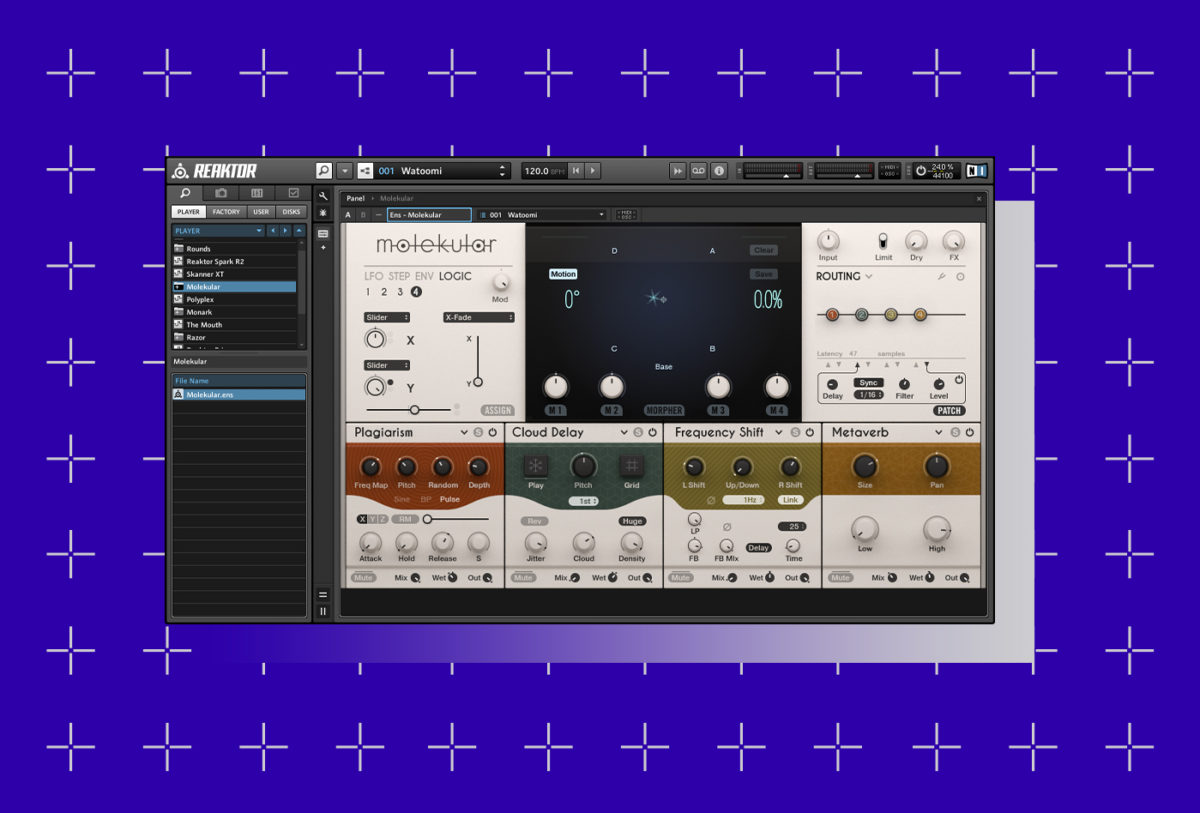
BUILDING COMMUNITY
Since the very beginnings of GENERATOR, REAKTOR has supported a worldwide network of like-minded musicians and developers who – motivated by generosity and a desire to learn from one another – share their own creations for free.
Today, the REAKTOR User Library contains some 6,000 ensembles from hundreds of talented builders, but its beginnings were in a humble mailing list, as in-house Audio Developer and REAKTOR Builder Dietrich Pank remembers. “It wasn’t really about content, it was more about conversation,” he says. “There were several important people on the list, and we could all talk directly and ask questions. This was at a time when email was a fresh thing – it was the ’90s.”
Dietrich was another early employee attracted to the company by GENERATOR. Having discovered the software while working in a music store in the late ’90s, he left his band on tour in Munich, booking an expensive last-minute flight to Berlin to meet the NI team at Berlin’s Love Parade. He applied for a job soon after, and has been here ever since.
“You have to think about a REAKTOR instrument – it’s just a small file,” explains Stephan. “It’s just a small thing that you can attach to an email, and you could already do this in the 90s. Having a valuable instrument or effect simply as an email attachment. It’s amazing!”
For Vernon Reid, founder and guitarist of the NYC band Living Colour, the User Library was part of the appeal of working in REAKTOR in the first place. “Native Instruments was the first company of its kind that had a burgeoning community of user-creators,” he explains. “And what made REAKTOR and Native Instruments the best bargain was all of the ensembles that were available for public consumption – to download for free. All of these incredibly brilliant creators would put up their latest creations and people would rate them. It was almost like the first audio social network, a decade before Facebook or Twitter and all of that.”
“The Native Instruments community around REAKTOR was just remarkable,” he continues. “One of my favorite creators back then was Martin Brinkman. Anyone that’s an old-school REAKTOR head, you definitely know the name Martin Brinkman. There was another creator that went by LazyFish. So there were people that used nicknames and things, and they just did remarkable, edgy, crazy stuff.”
If you want more recommendations on the Best of the User Library, check out the many REAKTOR-focussed listicles in the NI Blog’s Free Stuff section.
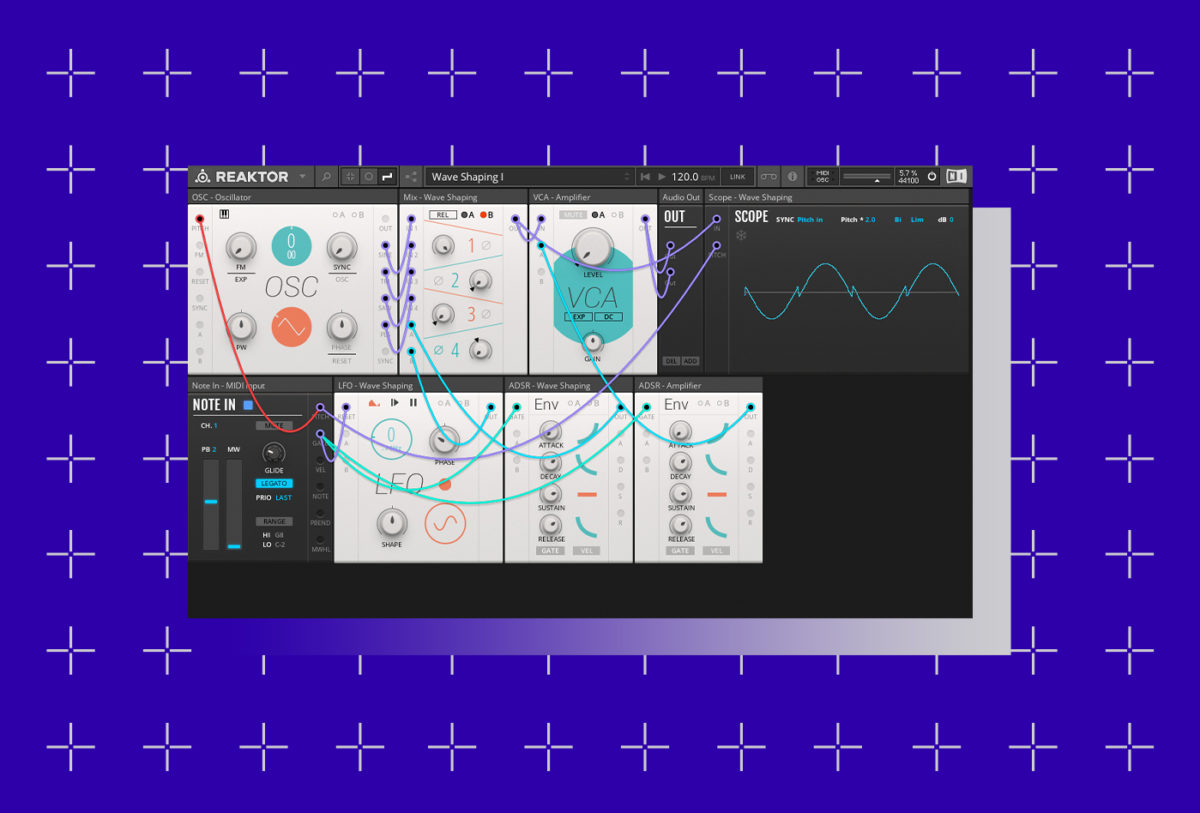
REAKTOR IN USE
The real measure of any instrument, of course, is the music it creates. And in REAKTOR’s case, there’s a rich history of releases from which to judge its impact. From legendary rock acts like Nine Inch Nails and the aforementioned Radiohead to neo-classical composers like (noted REAKTOR-builder) Max Richter and electronic experimentalists like Mark Fell, Gábor Lázár, and Errorsmith, the platform’s impact has been felt across almost every genre. RAZOR alone can be heard on hits from the likes of Dua Lipa, Fever Ray, and Modeselektor.
One of REAKTOR’s most prominent advocates in the world of electronic music is Josh Eustis of Telefon Tel Aviv, who told us in a 2020 interview, “On every single Telefon Tel Aviv track since 1999, we have used Reaktor.”
“My first introduction to REAKTOR was in Josh Kay’s studio in Miami in the late ’90s,” he reveals when we catch up again as part of NI’s 25th-anniversary celebrations. “At some point, he showed us REAKTOR and Charlie [of Telefon Tel Aviv] and I were just gobsmacked by what you could do with it. REAKTOR to me is a sonic frontier. It’s the edge-case of what you can do with sound. And that’s always interested me, in particular with Telefon Tel Aviv – trying not to walk down paths that have been trodden previously.”
It’s a radically innovative software environment that to this day impresses me – and the sound quality has improved vastly with each version.
This ability to create never-before-heard sounds has made REAKTOR a favourite of many sound-design aficionados over the years. And as sound designers go, few can match the impact of Richard Devine, who – aside from his own musical output – has created sounds for Nike, Apple, and Coca-Cola, as well as contributing to major gaming franchises and even designing the “engine” sounds for Jaguar’s first electric car. A chance encounter with Mate Galić at a gig in the late ’90s led to his first commercial sound design job, and he’s contributed presets to the majority of NI’s instruments since then.
“I would say Reaktor is still my all-time favorite environment,” he tells us. “It’s a radically innovative software environment that to this day impresses me – and the sound quality has improved vastly with each version. The amount of instruments that I’ve designed in Reaktor over the years is well into the hundreds – things that I’ve used and created for my own projects, for sound design projects, games, film, TV adverts… It’s still one of my favorite environments for creating unique sounds from scratch, using synthesis or processing samples.”
More interesting still than looking back over 25 years of REAKTOR history is looking forward to the next 25. We’re working on our own tweaks, updates, and instruments, of course, but the future of this platform is also up to you. If you’re using REAKTOR in your music or sound design, creating your own tools, or just have thoughts to share, we want to hear it. So tag us on social (you can also use #NI25), or get involved in the REAKTOR-based discussions over on the NI forum. Even better, share your creations with the community via the User Library – we’ll be listening.
Additional interviews for this piece by Vivian Host.
Click here to download TWENTY FIVE for FREE, and be sure to check out the 25th Anniversary Collection – an ultra-exclusive range of KOMPLETE. MASCHINE, and TRAKTOR hardware in your choice of Ultraviolet or Vapor Gray.








